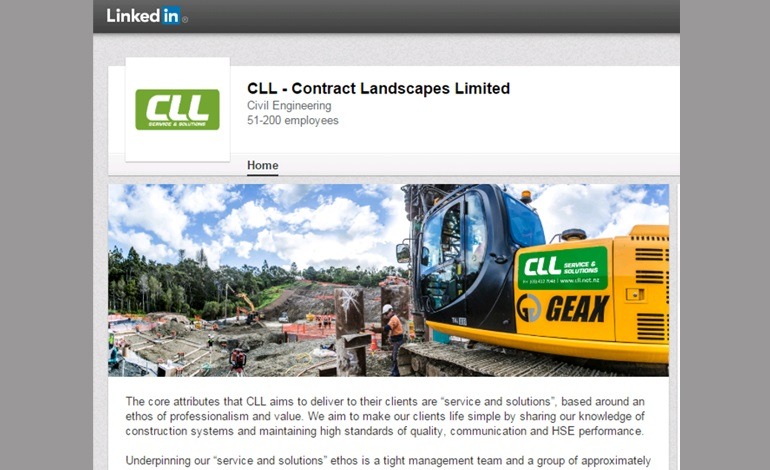Regardless of your industry, you avoid engaging with social media at your peril, says Chelsea Ford from civil construction firm Contract Landscapes (CLL).
The Auckland-headquartered company is well-known for its sub-surface expertise; undertaking bored, driven and sheet piling, retaining wall construction, slip stabilisation, ground anchor installation, seismic strengthening, site decontamination and drainage and foundation work.
But CLL has also taken a lead online, ensuring the digital spotlight is thrown on its project wins and its people’s successes.
Through media such as Twitter and LinkedIn, CLL is broadcasting its achievements; creating a public portfolio of work that acts as a billboard for the company’s skill set.
Chelsea Ford, CLL’s digital marketer, along with general manager Sean Henry, has been a big advocate of social media as a cost-effective marketing tool for some time. Chelsea says that social media is actually a natural fit for the construction industry.
“When you think about it, all of our activities take us into the public sphere. We’re constantly engaging with the public in whatever project we do – whether it’s on public or private property – we’re working in the community.
“So if we can talk about what we’re up to and make that information accessible to anyone, it generally means the external portions of a project – the interactions with stakeholders outside of the main worksite, for example – run a lot smoother.”
The conservative view of social media – that it’s for narcissists, desperate daters and energy drink companies marketing to teenagers – has become old-fashioned in the extreme. The idea of businesses assuming “it’s fine for them but it’s not for us” has become as outmoded as the Yellow Pages we once would have looked those businesses up in.
“The assumption is often that social media is all one way; that we talk about what we do but there is no measure of response. But actually we’ve found quite the opposite,” continues Chelsea.
“Part of the successful outcome of an active social media presence is creating a footprint online; you can invest a lot in a website, but for a lot of companies these tend to be static outlets – you populate it with key information and it stays the same for long periods of time.
“With the ability to update regularly through LinkedIn or short messages and links to interesting relatable content on Twitter, we’re portraying that we are an active company, that we have a lot on and that we’re considering key issues in our industry too.
“All the time we’re increasing our online presence beyond what our website can give us as well. Our website relies on people finding us, but with social media we’re taking our message out to people.”
CLL managing director Terry Donnelly is a big driver of his company’s engagement in social media too. Rather than something that happens remotely through another department, the company’s online activities are watched closely by Terry, says general manager Sean Henry.
“There is a professional level to our activities on LinkedIn that any company owner can appreciate. When you talk about a particularly challenging project that you’ve completed, you’re publishing information that is interesting to fellow engineers both here and overseas.
“It’s a really effective way of marketing to an audience of your peers. We’ve had principal engineers from as far away as Chile commenting on what we’ve achieved, all because we’ve put together a short message and some photos of a project and posted it on LinkedIn.
“We’re reaching an audience we’d possibly never get to otherwise; one that features colleagues as well as customers.”
Chelsea says that Twitter has been very effective – CLL has gathered more than 450 followers of their posts in six months – and the company has also launched its own YouTube channel, showcasing easily gathered video clips from its project work around New Zealand. However, she says, a robust social media presence does require commitment from all levels of the company.
“You often see companies half-heartedly embracing social media; it’s something they’re told they should be doing by one person in the business, or an external agency.
“But if there is no buy-in from higher levels within the company, then there is often little follow- through and what starts off with a bang doesn’t last. Consistency is key; the only way a company will build an audience is having a consistent corporate message and a consistent presence,” she says.
“Digital marketing is a relatively new tool in the toolbox and we’re always discovering new parameters. Also you should never underestimate how much time it involves to develop a really robust social media policy,” concludes Sean Henry.
“But it is absolutely worth engaging with the public and clients in this manner. Whether a company has five or 50 employees, talking about your achievements on Twitter or through the company’s LinkedIn profile, or showing men and machines at work on YouTube – all these mediums are direct, instantaneous and free to use.
“Social media has changed the way we get our message out and who we’re getting it out to, plain and simple.”


Parting words from Jeremy Sole- a final column